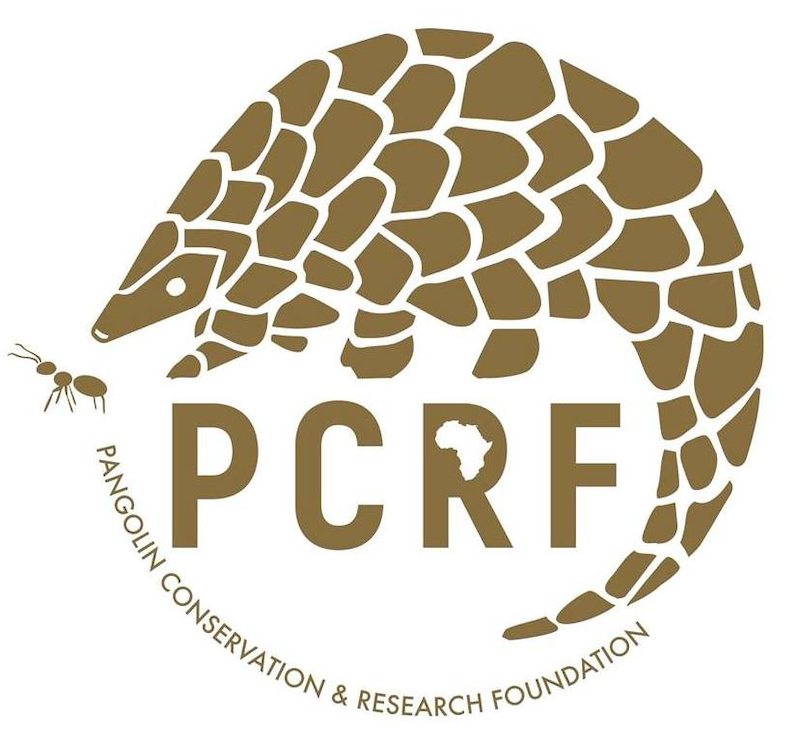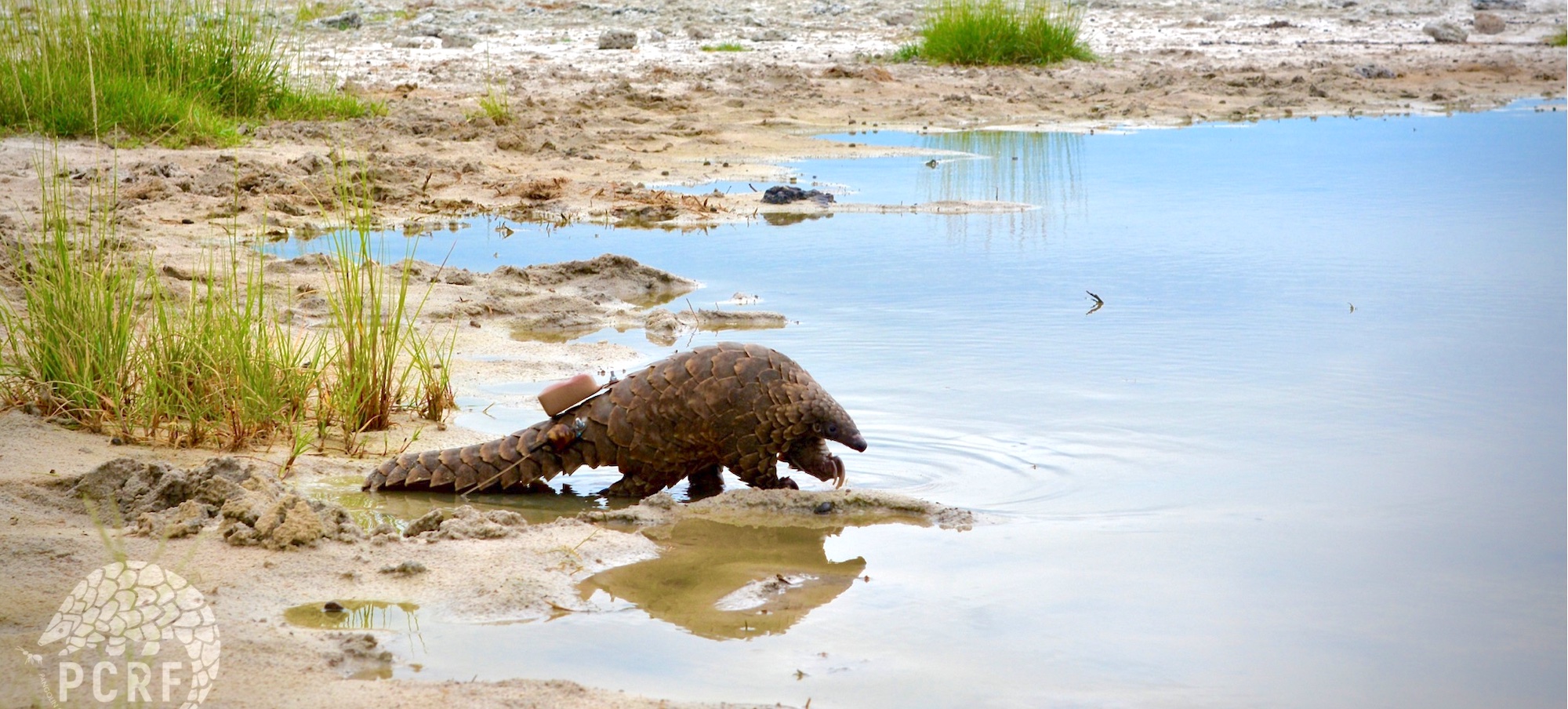
Trafficked pangolins get a second chance, but do they survive?
8th November 2022
In recent years, pangolins have become the most trafficked animal in Namibia. According to national wildlife crime reports, 491 pangolins (152 live and 339 carcasses or skins) were confiscated in the last seven years (2015-2021, MEFT statistics) and 640 arrests were made. Pangolins are poached for their scales, body parts, and meat for traditional beliefs, medicine and food worldwide. In recent years there is rising pressure on the species primarily due to their scales being used in traditional Chinese medicine. For nearly 80 million years their scales have protected them against predation – now they are a reason for which they are killed.
About 30% of the poached pangolins were still alive when their traffickers were caught. These pangolins are often weak and medically compromised, as they have been held in captivity for days or weeks without any food or water. Pangolins only eat live ants and termites in their natural habitat, which makes them hard to cater for even after they are confiscated. After a quick health check and treatment by a veterinarian approved by the Namibian Pangolin Working Group (NPWG), the animals are released. What we don't yet know is how long these pangolins survive after their release.
Why are releases not always successful?
There are several reasons why releasing pangolins is a challenging task. Firstly, we do not understand where resident pangolins have already established home ranges. Secondly, trafficked animals have often gone through a great deal of trauma and often use their remaining energy to appear strong and escape
. Finally, we are still working out how to determine what type of resources and habitat the released individuals need to survive. Rarely does the wildlife crime suspect reveal where they first caught the pangolin, making it impossible to know which area or habitat it came from.
Preliminary research shows us that pangolins are highly territorial towards individuals of the same gender, similar to the social structure of leopards. The core area of one pangolin does not overlap with another of the same sex. While there is some overlap on the outer edges of their territories, it is likely that neighbours will use these areas at different times.
When two pangolins of the same sex encounter each other, they will fight to defend their territories. They use their sharp, strong claws to scratch, slice, and pull at one another. Common injuries are at the base of the scale where it splits from the skin due to pulling by the opponent. They also target the soft underside and genitals of their opponents. Fighting injuries are common, but resident pangolins are usually healthy enough to recover. Newly released pangolins that have only just recovered from being caught up in the illegal wildlife trade are at a major disadvantage to residents.
Resident pangolins are hard to detect and often we know nothing about pangolin populations at release sites. If a pangolin is released in the middle of a resident's territory, it will likely be beaten up if it does not move out soon. One of the Pangolin Conservation and Research Foundation's (PCRF) projects is collecting sightings and signs of pangolins to find out more about resident populations at potential release sites in an effort to address this challenge.


How are pangolins monitored?
To find out how released pangolins are faring, PCRF started a research project in collaboration with the Ministry of Environment, Forestry, and Tourism (MEFT). Released pangolins are tagged with GPS satellite transmitters and VHF radio transmitters to track their movements and behaviour soon after release. They are caught and weighed at regular intervals as a measure to establish how well they are doing – an individual that has settled in well and started foraging is expected to gain or maintain their weight.
The data on the movements of the animal, sent to us by the satellite transmitter, can be viewed on a laptop or cell phone. We can thus remotely view the pangolin's movement patterns, indicating matters like dispersal (moving out of a territory), death, and poaching. The VHF transmitter allows us to physically locate the animal on the ground to check its weight, body condition, foraging habits, and burrows used. Foraging samples are collected to record dietary preferences in different habitats. Remotely-triggered camera traps are deployed at burrows to monitor the activity and presence of resident pangolins.
The results of this project will inform the development of release, soft-release, and post-release monitoring guidelines for the species. This is the first project in Namibia to collect detailed data on survival, which is connected to the research on the ecology and genetics of resident pangolins across Namibia. These research findings should improve our understanding of pangolins and increase the survival rate of those that are confiscated alive from the illegal trade.
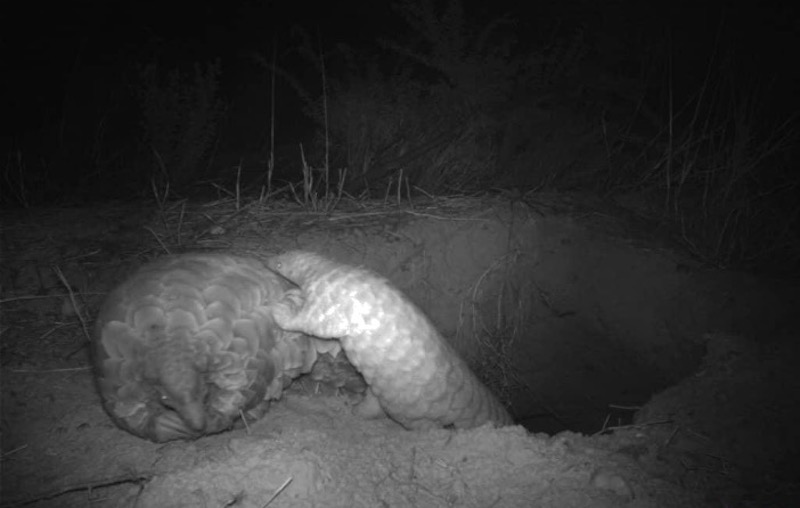
How do we know if a pangolin is dispersing or settling down?
Once a pangolin is tagged and released, we monitor its movements to find out if it leaves the area where we released it (i.e. disperses) or if it settles down and starts to forage. Dispersal indicates that the release site was within another pangolin's territory, or not suitable for the released animal for some other reason. Settling down and foraging shows that the area is an available territory and contains enough food and burrows.
On a map generated by a tag, dispersal looks like constant moving with fairly long distances between GPS points which are set to hourly fixes, showing that the animal is doing little or no foraging along the way. If an animal finds what it considers to be a safe burrow, it shows centralised movement patterns – they go back to the burrow each morning and move around its vicinity at night. Foraging patterns look like zigzags across the map, and the individual covers much smaller distances over time than during dispersal.
These movements immediately after release can be the difference between life and death. Individuals that do not settle down will lose weight rapidly and be exposed to heat stress because they are not resting in a burrow during the heat of the day. Using this knowledge, we can re-capture these animals and put them through a soft-release or rehabilitation programme to improve their physical condition and gain strength before they go back into the wild.
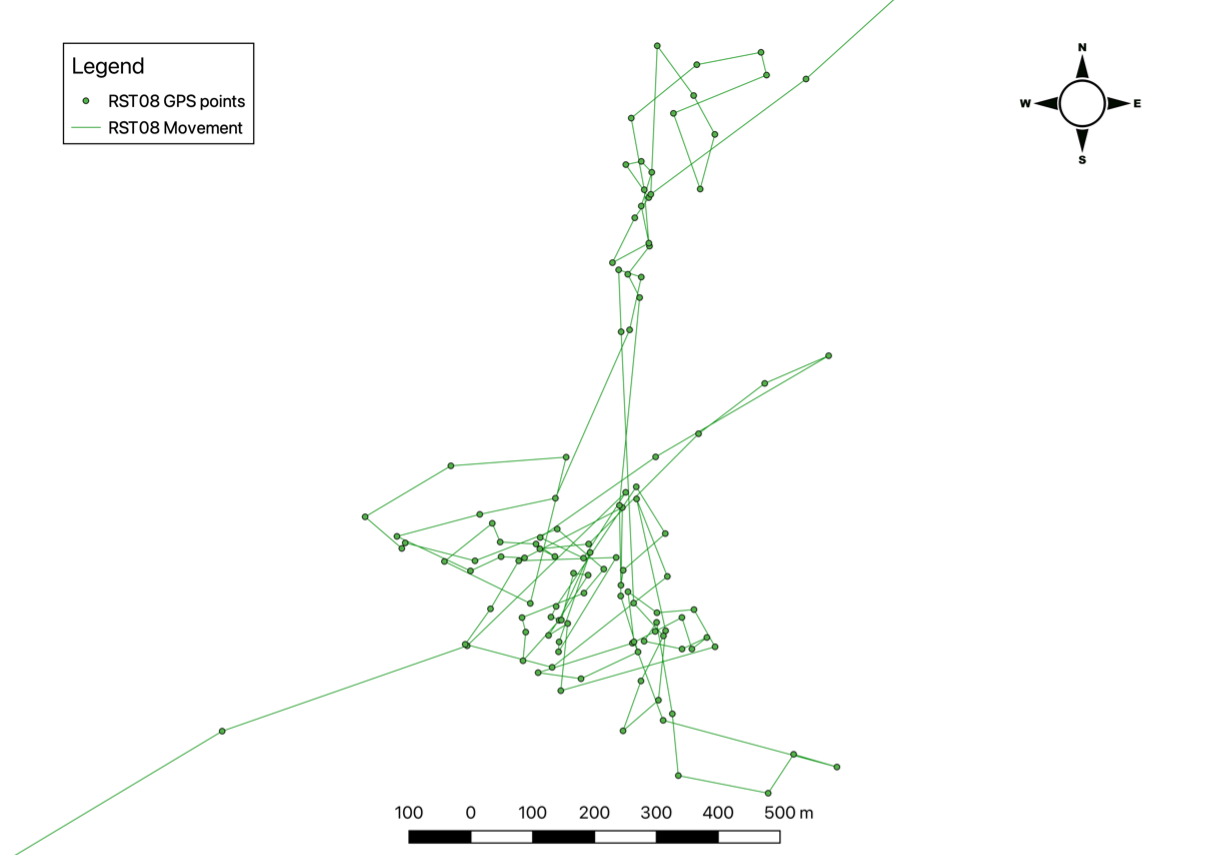
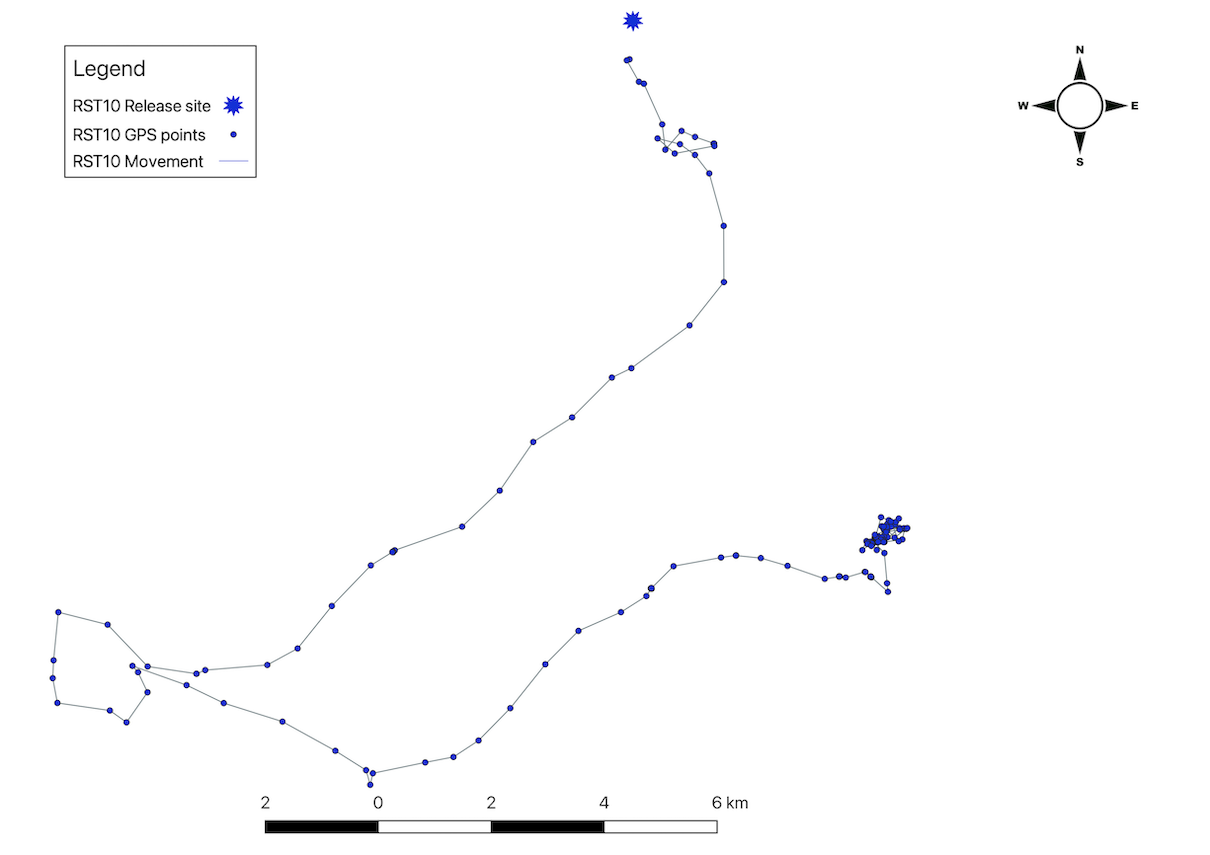
What has happened to pangolins released in reserves and parks in Namibia?
The first monitored releases on a private nature reserve in 2018 and 2019 were unsuccessful. Three individuals left the reserve within seven days of release, and one died as a result of injuries from fighting with residents. The animals were released before we knew anything about resident pangolins in the area. Since then, we have discovered tightly packed pangolin home ranges across the reserve, leaving little room for new individuals.
Since 2021, five GPS-tagged pangolins have been released into National Parks (Khaudum, Etosha and Bwabwata) and six onto private land. This work is made possible by the close collaboration between stakeholders in pangolin conservation which was sparked by the NPWG, with post-release monitoring conducted by the PCRF and MEFT.
Three of the five individuals were released in the same areas of Etosha National Park at different times. Their post-release movements show mixed results. The first one, released on 12 March, initially showed centralised movement and foraging patterns, and the first weight check revealed that this male had gained a healthy 1.5 kg. For unknown reasons, however, it dispersed soon after the weight check. The tag on this individual has stopped working, so we do not know if it has settled in a new area.
The second pangolin, a male that was released on 29 March, demonstrated dispersal movement patterns for the first two weeks before finally appearing to settle. During the dispersal, the transmitter often checked in all day and tag temperatures reached up to 40°C – indicating that the pangolin was not finding burrows for refuge, or they were very shallow, offering no relief from extreme temperatures. A weight check on 5 May showed he had lost 2 kg (over 20% of total weight) since the time of release, and he was found dead on 16 May. It is likely that the constant movement without sufficient refuge led to the severe weight loss and finally death.
The latest pangolin, released on 15 September, dispersed 5 km in one night but has since settled in an area and is demonstrating centralised foraging patterns. This individual will be monitored as long as the tag is active; new tags will be fitted to track its long-term survival.
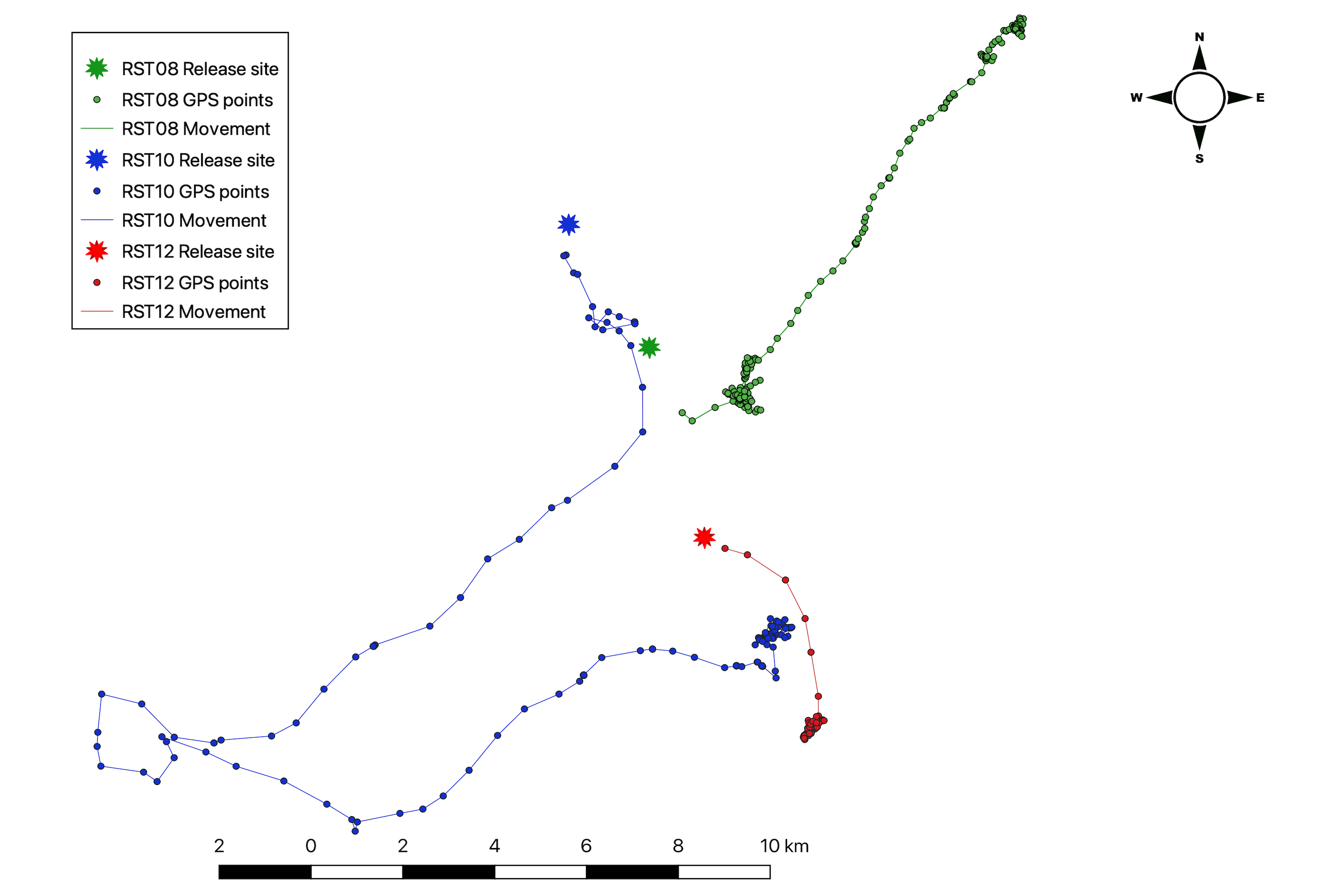
Learning from past releases to improve pangolin survival
Post-release monitoring is just one aspect of pangolin conservation in Namibia. The work of the Blue Rhino Task Team, the Ministry of Environment, Forestry, and Tourism, and the Namibian Police is crucial to reduce pangolin poaching in the long term. Since releasing a confiscated pangolin is far from straightforward, the ultimate solution is to prevent poaching and keep pangolins in their home ranges. However, for as long as there are live trafficked pangolins, we will need to continuously improve their survival chances after rehabilitation and release.
Results from this project are reported back to the MEFT and the NPWG to inform conservation management planning. The NPWG has drafted the first Conservation Management Plan for pangolins in Namibia, which is slated for approval this year. Based on our findings, standard operating procedures for release, soft-release, and post-release monitoring will be developed to improve success rates of releasing confiscated pangolins.
Ideally, all live-confiscated individuals should be monitored until they have established a home range in their release site and remained there for more than six months. A higher bar for success, which would require even longer monitoring times, would be to show that the released individual has reproduced in its new home. To achieve this goal, more funding is needed to fit and replace tags during the monitoring period. This information would then be fed back into the guidelines for pangolin releases, ultimately improving the chances of survival for trafficked pangolins.
How can you help?
Consider donating to the NPWG emergency veterinary care fund or PCRF to support the care and release of these live-confiscated animals. Share what you have learned with others, as there are still many people who don't know what a pangolin is! These relatively unknown animals provide valuable ecosystem services by consuming large numbers of ants and termites and they are an important part of Namibia's natural heritage.
Kelsey Prediger is the Founder and Executive Director of the Pangolin Conservation & Research Foundation, the secretariat of the NPWG, and the co-chair for southern Africa of the IUCN SSC Pangolin Specialist Group. This research was conducted through multiple projects under her leadership with support from Novald Iyambo, Piet Beytell, Kenneth Uiseb, and Lovness Ndeiweda of MEFT, Dr. Morgan Hauptfleisch of the Namibia University of Science and Technology (NUST), Dr. John Irish of the National Museum, and Dr. Monique MacKenzie and Dr. Lindesay Scott-Hayward of the University of St. Andrews in Scotland. The Namibian Pangolin Working Group has also supported this project through their work on streamlining the process for live-confiscated pangolins. Rooikat Trust and the Namibian Chamber of Environment (NCE) have contributed to the veterinary care of animals. Generous financial and logistical support was received from NCE, Namibia2Go, B2Gold, Total, the Pangolin Consortium, the University of St. Andrews, NUST, MEFT, the Oak Foundation, Varta Batteries Namibia, Namib Tyre, Van Rensburg Holdings, Camp Hire Namibia, and Bushwhackers.
If you enjoyed this page, then you might also like:
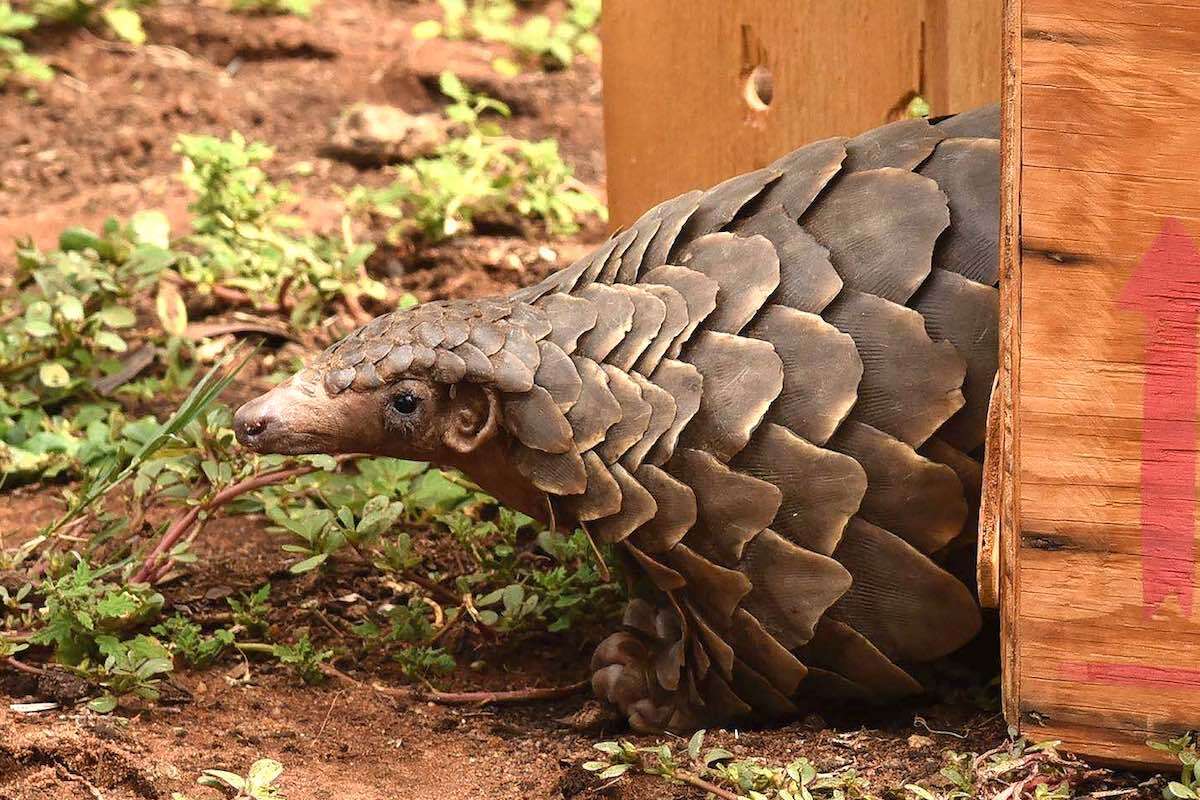


For articles on similar topics, please click one of the following options:
For more great articles from Conservation Namibia see below...
Conservation Namibia brought to you by:
We use cookies to monitor site usage and to help improve it. See our Privacy Policy for details. By continuing to use the site, you acknowledge acceptance of our policy.
